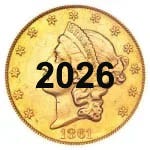Franklin’s Libertas Americana medal carries depth of meaning
There is little doubt that the most admired medal in American numismatic history is the one commissioned by Benjamin Franklin in 1782. Although the Revolutionary War was not yet over,…
There is little doubt that the most admired medal in American numismatic history is the one commissioned by Benjamin Franklin in 1782. Although the Revolutionary War was not yet over, the end of this long struggle was in sight with the victory over the British at Yorktown in October 1781.
This medal is also of interest to those collectors who specialize in the early coinage of the United States, especially that of the 1790s. The head of Liberty found on this medal was the inspiration for motifs on the copper and silver coins.
When news of the Yorktown victory reached Franklin in Paris, he wrote one correspondent that “this puts me in mind of a medal I have had in mind to strike since the last great event [Yorktown] you gave me an account of.” Franklin also wished the medal to commemorate the critical victory at Saratoga in October 1777, almost exactly four years before the Yorktown drama was closed.
There was more to the medal than just remembering these two important events. Franklin, who was the American envoy to the court of Louis XVI, felt that France had not received its proper respect from the United States. He knew that without French naval and military help, the victory at Yorktown would not have been possible, and the war could have dragged on for several more years.
In a stroke of genius, Franklin engaged famed artist/engraver Augustin Dupré to prepare the necessary artwork. Dupré produced designs so good that everyone who saw them was deeply moved. Dupré, of course, took the precaution of showing his work to other key artisans of the Paris Mint and was gratified to know of their approval.
The obverse of the medal has a superb head of Liberty, one that has inspired artists since that time. The date of July 4, 1776, is found below the head, commemorating the Declaration of Independence.
The reverse by Dupré is a masterpiece of classical symbolism. France, holding a shield and armed with a spear, defends the infant America from the British lion. This vignette is accompanied by a Latin legend, which translates as, “The brave infant is aided by the Gods.” In Franklin’s mind, there was no better way to acknowledge the role played by France in the war and the ultimate victory.
In early 1783, although the peace treaty ending the war had not yet been signed, Franklin pushed the medal project. By the middle of March 1783, the dies had been finished, and Franklin was considering the number to be struck.
The medal was executed in three versions: gold, silver, and copper. Only two gold medals were struck, these being for Louis XVI and Queen Marie Antoinette. The whereabouts of these two medals is unknown today, and they were probably melted during the carnage that accompanied the French Revolution that began in 1789.
In addition, some 50 or more silver medals were struck by Franklin’s order, and these were presented to heads of state in Europe as well as important government and military officials in America.
The bulk of the medals struck, some 200 or so, were of copper. Each was given a special bronze patina by means of a chemical bath.
We do not know for certain how many medals in all were made, but it is known that Franklin had printed a special sheet describing the medal and the meaning of the vignettes. There were only 300 made, which would have allowed for a certain number of these descriptions to be lost, so it may therefore be estimated that about 250 or 260 medals in the three metals were originally struck.
The dies were used by the Paris Mint after 1790 to strike occasional medals for collectors, but the number cannot have been all that great, perhaps a dozen or two pieces.
In the late 1950s, American numismatist John Ford, Jr. asked Paris Mint officials to search for the long-missing Libertas Americana dies, and they were found, though heavily rusted. A private numismatic firm, First Coinvestors, then contracted with the Paris Mint in 1975 for official restrikes, and this was done, although the new pieces were of a larger size, at 77 millimeters; the 1783 original was 48 millimeters (1.9 inches).
In 1783, Benjamin Franklin distributed the medals meant for European recipients but asked Elias Boudinot, a former president of the United States (the Confederation government, to distribute the remaining pieces in America. Boudinot, who was later mint director from 1795 to 1805, did so.
The role played by the Libertas Americana medal in the 1780s was far from over. The early coins of the United States relied heavily on the Liberty head devised by Dupré. We first see this head on the 1792 pattern disme. And, although crudely done, the Liberty heads on the 1793 Chain and Wreath cents almost certainly used this medal as a guide.
When we reach the 1793 half cent and the 1793 Liberty Cap cent, there is no longer any question that the Dupré Liberty head was the direct model. In a similar sense, the Flowing Hair silver coins of 1794–1795 were equally dependent on the Libertas American head of Liberty for inspiration.
Those who collect the early coins of the United States could do worse than add a Libertas Americana medal to their holdings. It would make a perfect addition.
This article was originally printed in Coins Magazine. >> Subscribe today.
More Collecting Resources
• If you enjoy reading about what inspires coin designs, you'll want to check out our Fascinating Facts, Mysteries & Myths about U.S. Coins eBook.
• More than 600 issuing locations are represented in the Standard Catalog of World Coins, 1701-1800 .









